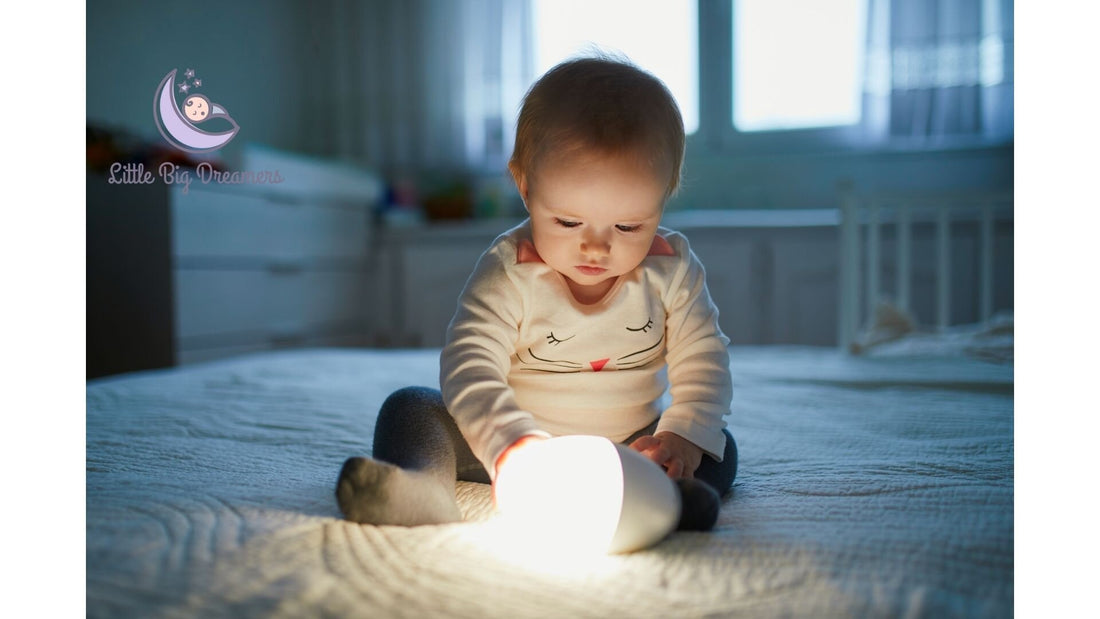
Healthy sleep from the start
Share
Mylee Zschech is the founder of Little Big Dreamers. She is a Child Sleep and Behavior Consultant and Lactation counselor helping families transition through the early years. This week, she’s sharing her insights on steps new parents can take to establish healthy sleep habits for life. @littlebigdreamerssleep

As new and expectant parents, we don’t always get the opportunity to learn about newborn sleep and how to set up healthy sleep habits early on. But knowing the steps we can take during the newborn period to encourage healthy sleep can make getting our newborn to sleep easier and can often even prevent sleep challenges later on through gently acquiring independent sleep skills.
First, we need to know what newborn sleep looks like.
When a baby is first born, their sleep times and awake times are largely governed by their need to feed. As they move through the early weeks, they start to wake up more - but these periods of wakefulness are still quite short - starting at 45-60 minutes and moving up to 1.5 hours by the time they hit 4 months old.
You may hear lots of baby groans or cries during sleep, and these are normal. Knowing this helps you to not prematurely respond when your baby is still sleeping. If you hear grunts and groans and short cries it can be helpful to wait a minute or two and see if they settle back to sleep.
Next is to understand the 5 components of healthy sleep.
There are 5 components of healthy sleep. These are true for everyone - babies, kids, and adults. They include:
A consistent place to sleep (e.g. crib or bassinet)
When we use the same sleep space as consistently as possible, this helps baby know that when they’re in this space, it’s sleep time. In the newborn phase, it’s normal to potentially have some naptime snuggles or use a carrier or a stroller. This is fine. But as baby gets older, they start to make connections between environment or cues and behavior, and a consistent sleep space becomes more important.
A sleep environment that is conducive to sleep
A sleep environment that is dark and free of distracting noises helps to encourage sleep. This means using blackout blinds to block out light - both at nap times and bedtime. Sound machines are wonderful for blocking out distracting noises, as well as being just generally relaxing. Newborns love them as they remind them of the noisiness of the womb. Sound machines can be used at any age. You may even like one too!
A consistent soothing bedtime and naptime routine that acts as a sleep cue
From about 6 to 8 weeks of age, babies start to make connections that certain things happen before sleep, and it helps to prepare their brain for sleep so they can fall asleep more easily. A consistent sleep time routine will help them make those connections, and it’s often a special bonding time for baby and parents to consistently spend together too. And even better, research has found that consistent sleep time routines can actually reduce night wakings for the long term!
Putting your baby to sleep when s/he needs to sleep
Putting your baby down at the perfect time can help with their ability to fall asleep and stay asleep. When we put a baby down either too early or too late they’ll struggle to sleep well. This is particularly true of having them awake too long as they will enter an overtired state and struggle with sleep to the point that they will likely need more help to sleep or wake more during their sleep. It can even cause shorter than normal naps. Keeping wake windows short and watching closely for sleep cues will help. Sleep cues can be different for each baby and it can take a bit of time to learn which ones your baby tends to show but these can include:
losing interest or turning away
staring of in to space
jerky movements
ear pulling or eye rubbing
becoming fussy
Yawning and crying are signs that they are entering into the overtired state that we want to avoid.
Encouraging baby to self settle at bedtime and naptime and brief wake-ups
While we don’t expect a newborn to be perfect at independent sleep, starting to learn how to self settle to sleep is a process they can begin early on. This means that, when possible, we can give our baby a chance to try and fall asleep from drowsy. It won’t always work, and you might need to help them by doing some rocking, patting, or feeding, but the more times you try, the better they can do it themselves. And there might come a day you realize that every sleep time they naturally did it all by themselves! Being able to self settle at the start of a sleep period helps a baby learn to re-settle between sleep cycles, which are really only about 45-50 minutes for babies.
We know sleep can be a big challenge and stressor for new parents. We hope the considerations above help you feel more confident to navigate your baby’s sleep and start encouraging healthy sleep habits early on that can benefit you and your child for a lifetime!